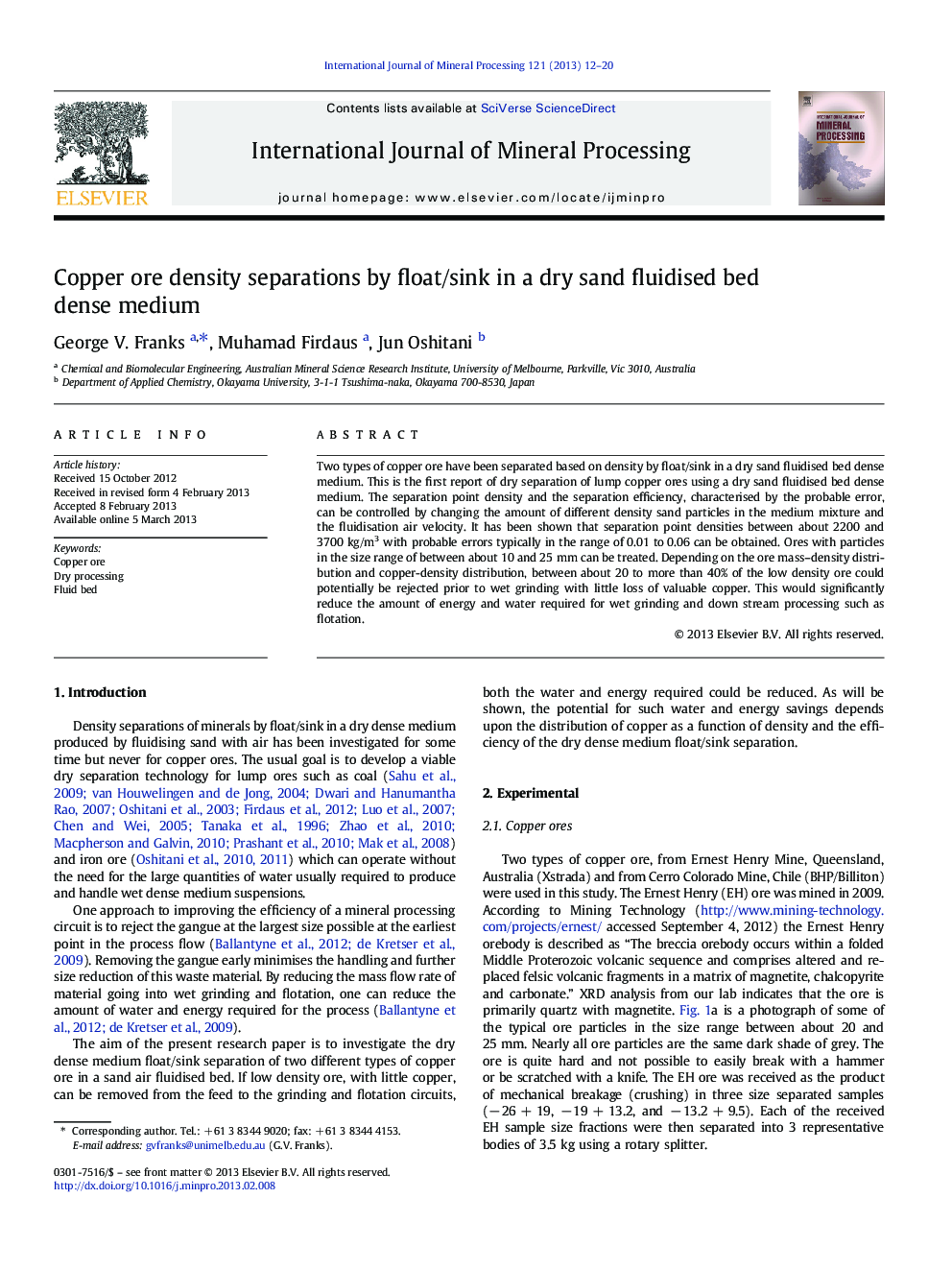| کد مقاله | کد نشریه | سال انتشار | مقاله انگلیسی | نسخه تمام متن |
|---|---|---|---|---|
| 214023 | 1425812 | 2013 | 9 صفحه PDF | دانلود رایگان |

Two types of copper ore have been separated based on density by float/sink in a dry sand fluidised bed dense medium. This is the first report of dry separation of lump copper ores using a dry sand fluidised bed dense medium. The separation point density and the separation efficiency, characterised by the probable error, can be controlled by changing the amount of different density sand particles in the medium mixture and the fluidisation air velocity. It has been shown that separation point densities between about 2200 and 3700 kg/m3 with probable errors typically in the range of 0.01 to 0.06 can be obtained. Ores with particles in the size range of between about 10 and 25 mm can be treated. Depending on the ore mass–density distribution and copper-density distribution, between about 20 to more than 40% of the low density ore could potentially be rejected prior to wet grinding with little loss of valuable copper. This would significantly reduce the amount of energy and water required for wet grinding and down stream processing such as flotation.
Figure optionsDownload as PowerPoint slideHighlights
• First float/sink of copper ore in a dry sand fluid bed dense medium separator.
• Separations between 2200 to 3700 kg/m3 with probable errors between 0.01 and 0.06.
• Mass-density distribution determines the amount of ore removed at a set point.
• The copper-density distribution determines the loss of copper to the gangue.
• There is potential to save energy and water by early rejection of gangue.
Journal: International Journal of Mineral Processing - Volume 121, 10 June 2013, Pages 12–20